Thousands of acres are burning in LA

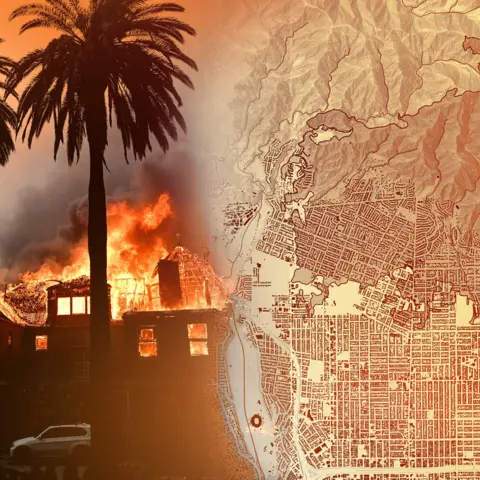 BBC
BBCFirefighters are battling to contain the massive wildfires in Los Angeles that have killed at least 16 people, engulfed thousands of buildings and forced tens of thousands of people to flee their homes.
A rapidly changing situation – these maps and images show the extent of the challenge, where the fires are and the damage they have caused.
The largest fire in the Pacific Palisades area is the most destructive fire in the history of Los Angeles. More than 23,000 hectares have burned.
Placing the affected area on the maps of New York and London gives a sense of how big it is, from Clapham to Greenwich in the UK capital, or the larger areas of Manhattan and Queens.
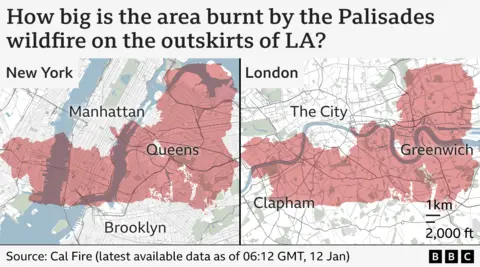
Where are the Los Angeles fires burning?
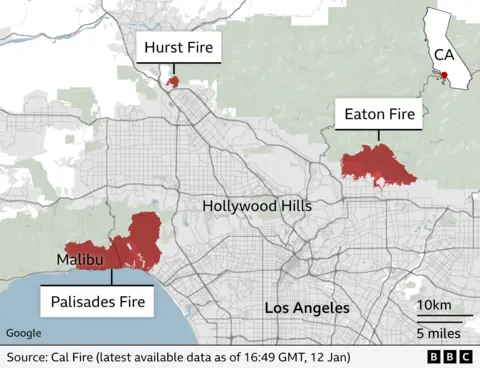
Three fires are currently burning in the Los Angeles area.
- Palisades fire: A large active fire is burning between Santa Monica and Malibu. Area burned: 23,707 hectares.
- Eaton fire: The second largest fire burning north of Pasadena. Area burned: 14,117 hectares.
- Hurst fire: northeast of the city. Area burned: 799 hectares. It’s 89% contained, according to LA officials.
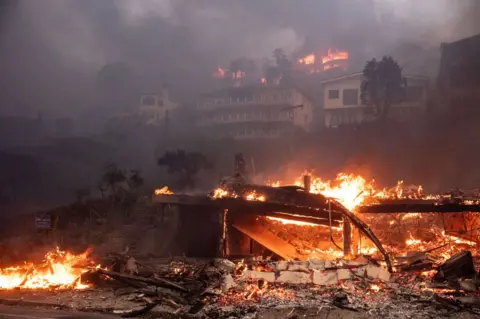 Getty Images
Getty ImagesBut six other fires have been put out.
Kenneth fire: In the West Hills area, just north of the Palisades. It was contained on Sunday afternoon, after burning 1,052 hectares since Thursday.
Lydia fire: Reported in the hills north of Los Angeles. Area burned: 395 hectares.
The archer Fire: A small fire that started on Friday burned 19 hectares.
Woodley Fire: A small fire was reported in a local park. Area burned: 30 hectares.
Olivas fire: A small fire was first reported in Ventura County about 50 miles (80km) east of Los Angeles. Area burned: 11 hectares.
Sunset fire: Reported in the historic Hollywood Hills area near many famous landmarks, including the Hollywood sign. Area burned: 43 hectares.
Massive fires have burned thousands of buildings
Officials say more than 10,000 structures were destroyed in the two major fires — nearly 5,000 each in the Palisades and Eaton fires.
As the maps below show, the fires are burning mostly in uninhabited areas but have spread to populated areas and many buildings could be at risk depending on how the infernos spread.
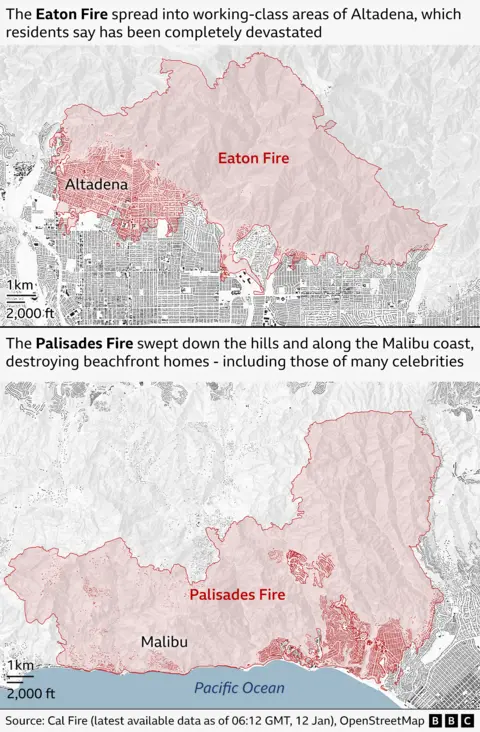
Among the buildings that have been destroyed in the Palisades are many special properties along the Malibu River.
Hover your cursor over the image below to see an aerial view of what the facility looked like and how it looks now.
Both the Palisades and Eaton fires can be seen from space, as shown in the satellite image below.
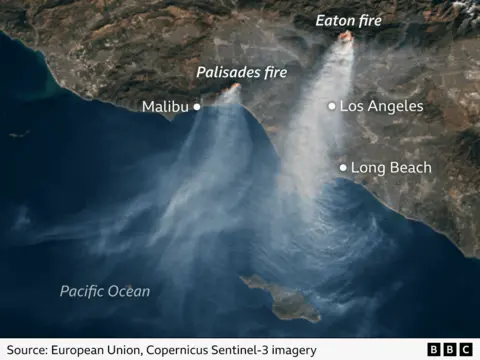
The combination of an extremely dry season – the city of Los Angeles has received only 0.16 inches (0.4cm) of rain since October – and strong coastal storms known as Santa Ana winds have created conditions ripe for wildfires.
Santa Ana winds flow east to west through the mountains of southern California, according to the National Weather Service.
As they blow across the desert further inland, they create conditions where the humidity drops, which dries up the vegetation. Once a fire starts, winds can blow smoldering coals into a hot area within minutes.
How did the Palisades fire spread?
The map below shows how quickly the Palisades fire spread, intensifying in a matter of hours. Just after 14:00 on Tuesday it covered 772 hectares and within four hours it had almost tripled in size.
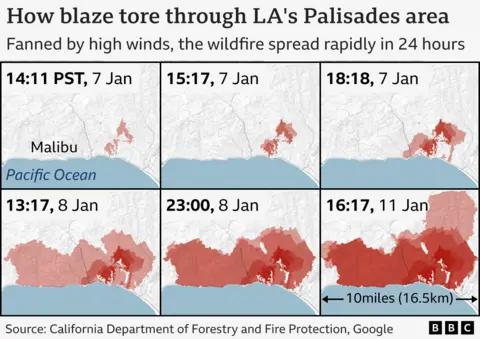
The Palisades fire has burned nearly 20,000 acres and thousands of people have been forced to evacuate the area, as more than 1,400 firefighters battle the blaze.
The Eaton fire also quickly grew from about 1,000 acres on Tuesday to more than 13,000 acres, forcing thousands of people to flee.
Photographers have also been capturing the devastating extent of the fires on the ground – as these before and after photos show.

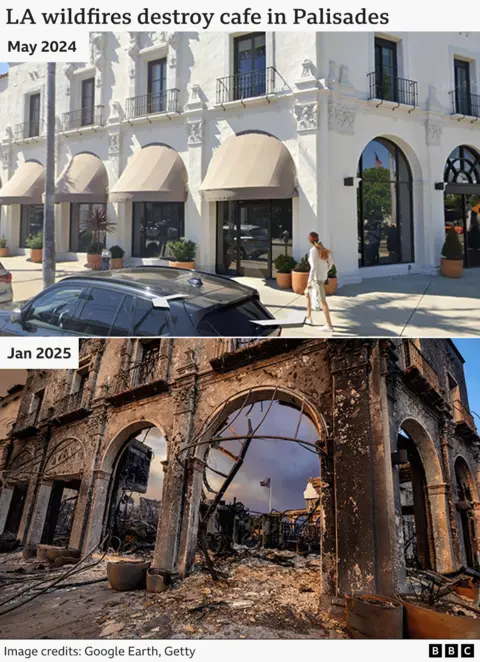
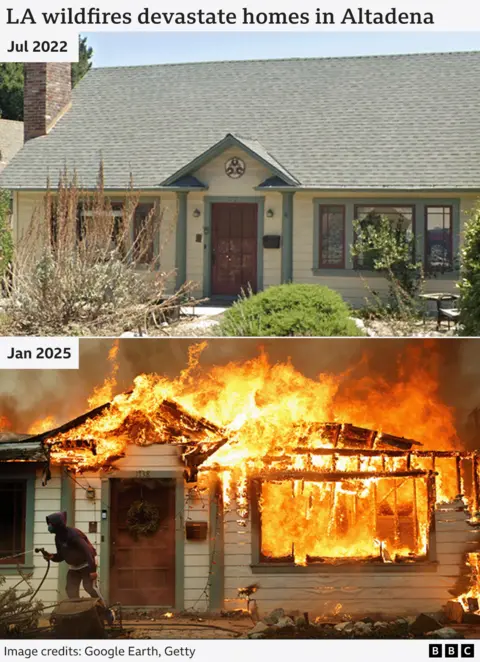
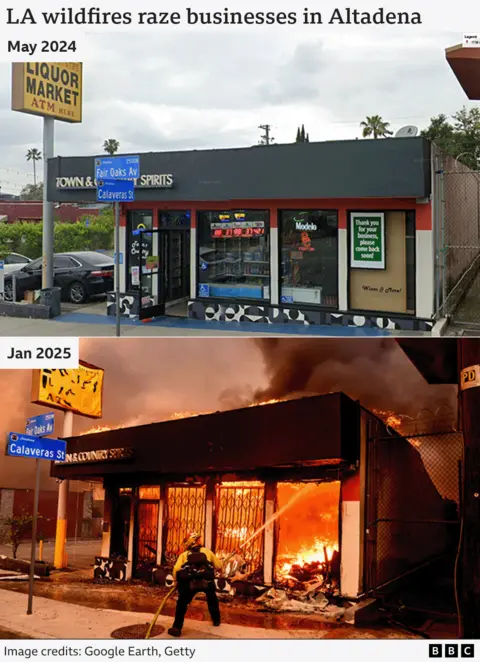
The Jewish Temple in Pasadena was destroyed in the Eaton fire. The center’s website says it has been in operation since 1941 and has a congregation of over 400 families.
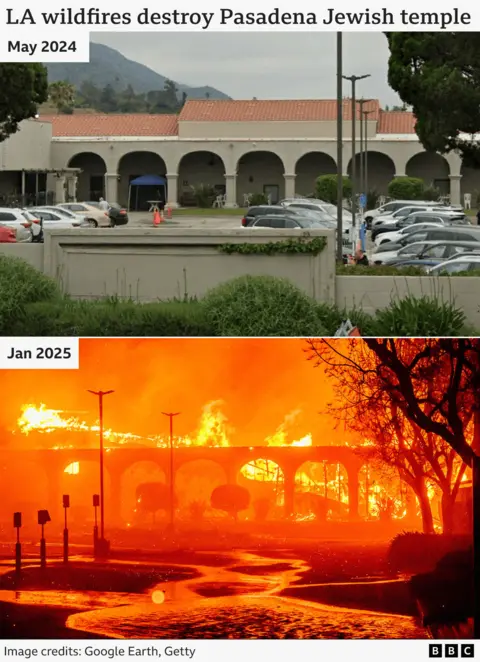
As authorities are still working to contain the fires, the extent of the damage is still being seen but it is on track to be among the costliest in US history, with losses expected to exceed $135bn (£109.7bn).
There is a glimmer of hope for firefighters, as the fire weather in southern California has been downgraded from “extremely critical” to “critical”.
But BBC meteorologist Sarah Keith-Lucas says there is no rain forecast in the area for at least the next week, so conditions are still ripe for a fire.
Source link




